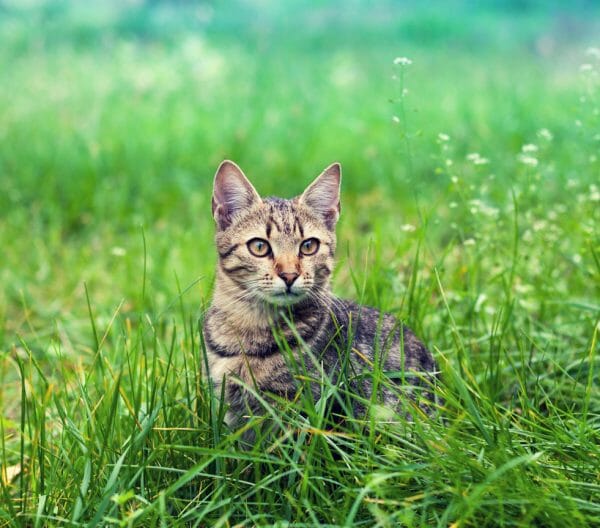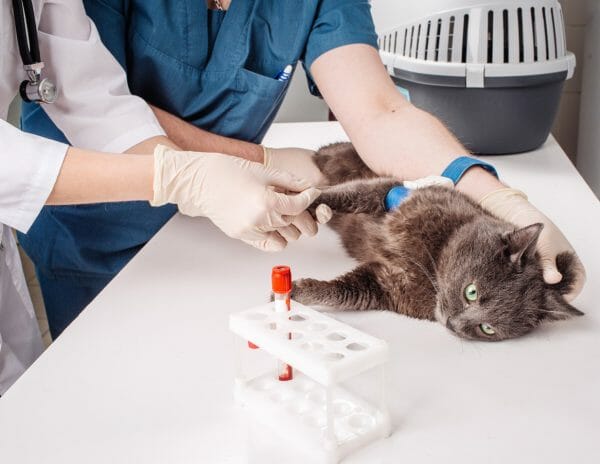What is Feline Leukemia?
Feline leukemia is an elusive, deadly virus that can appear in even the healthiest of felines. Feline leukemia virus (FeLV) is a commonly seen virus amongst cat populations. In fact, in any given year in the United States, FeLV can affect up to 3% of all cats. Leukemia is one of the top 5 leading causes of death in felines.
Causes of FeLV
Feline leukemia weakens the immune system of the cat, which leads to the cat being incredibly susceptible to infections that are transmitted virally. Leukemia (which is a virus itself) can also cause lymphoma—a cancer of the immune system. It can also cause blood-related issues, such as anemia.
Leukemia can be a tricky disease to overcome, but it is certainly not impossible. Researchers have found that found almost 70% of felines that contract leukemia can actually overcome it entirely on their own.

“At-Risk” Cases of Feline Leukemia
There are specific groups of cats that are prone to leukemia and considered to be “at-risk” cases. Some “at risk” groups that have a high risk of contracting FeLV include:
- cats living in close quarters with each other
- kittens
- chronically ill cats
- outdoor cats
Feline leukemia can occur in up to 30% of these vulnerable populations of felines. Fortunately, with the development of medications and FeLV vaccines, the rates of FeLV have gone down substantially in the past few decades.
How Do Cats Get Feline Leukemia?
Cats generally contract FeLV through direct contact with another infected cat. Bodily secretions such as urine, saliva, nasal discharge, and fecal matter are the most common ways felines come into contact with the leukemia virus. Sometimes, cats are bitten by an infected cat, while others may get the virus from sharing a litterbox or feeding bowl. Some kittens may receive the virus in utero from an infected mother.
It is important to remember that not all FeLV-positive felines immediately show symptoms. After a feline becomes infected, it can take a few weeks (or even a few years) for symptoms to develop. This means that feline leukemia can be an underlying condition that the owner may be unaware of for a long period of time.

How to Prevent an FeLV Diagnosis
Besides getting some tests done to ensure the cat does not have FeLV, there are a few preventative steps that owners can take to reduce the likelihood of their cat getting the virus. Two of the best ways to protect felines from contracting FeLV are to get the cat vaccinated against the virus and to keep the cat indoors as much as possible. If the cat ever gets sick, feline leukemia should be tested for each time. This is simply to rule out the possibility of the virus causing the sickness.
Feline Leukemia Symptoms
Here are some of the common signs of feline leukemia:
- Diarrhea
- Fever
- Pale gums
- Yellowing of the eyes and mouth
- Inability to breath properly
- Significant weight loss
- Decrease in energy and activity levels
- Easily contracts viral infections
- Swollen lymph nodes
- Poor quality of its fur coat
These are only some of the many symptoms that are known to afflict felines with leukemia. These symptoms can be brought to fruition in a matter of weeks, months, or even years after contraction of the FeLV virus. If any of these symptoms are being seen frequently in a cat, the feline should be immediately seen by a board-certified veterinarian. Many different medical conditions can reflect symptoms such as these, so it is important for the vet to pinpoint and verify the underlying cause of the symptoms.

Is Feline Leukemia Contagious?
Feline leukemia is highly contagious—but only to other cats. FeLV cannot be transmitted to humans or other animals of different species. However, in terms of feline-to-feline contact, feline leukemia is extremely contagious.
Cat owners should be aware that, even if a feline is vaccinated against feline leukemia, there remains a slight chance of the cat contracting FeLV. This is why prevention methods should be readily employed throughout the cat’s life. In addition, FeLV-positive felines should be kept away from other cats as much as possible, especially those that are unvaccinated.
Should a Cat with Feline Leukemia Be Put Down?
A cat with feline leukemia should not be put down! It is a common misconception that a feline leukemia diagnosis immediately leads to certain death. This is untrue. Depending on the age of the cat when it was diagnosed with FeLV, a cat can live a happy and long life with feline leukemia—especially if the symptoms of the virus stay dormant for a long period of time.
Because a kitten’s immune system has not yet built up a strong capacity for infection, many kittens die within a year of receiving an FeLV diagnosis. Cats that are diagnosed with FeLV as an adult tend to live much longer. This is because their immune system is stronger—making making them much more resilient against the virus. In felines that are consistently afflicted by feline leukemia, life expectancy can be about 30 months or less.

Feline Leukemia Diagnosis
Before any type of treatment can begin, feline leukemia must be formally diagnosed. Two common tests are used. The first test is an ELISA blood test, which is known for its accuracy in detecting the virus. If a feline tests positive the first time, the test will be conducted again in a few months. If the cat has a strong immune system, the cat may overcome the virus on its own and test negative on the second ELISA test.
The second test is known as the IFA, which is used to determine whether or not a feline is in the final stages of feline leukemia. Cats that receive a positive IFA test usually have a poor prognosis.
FeLV Treatment Options
Although there is no known cure for feline leukemia, there are ways to prolong the cat’s life. By remaining attentive to the cat’s overall behavior and reporting any changes to the vet, this can help keep track of the progress of the virus.
The cat will need regularly scheduled appointments and tests with the vet. The feline should always be kept in the house, and any unknown cats should be kept away from it. Preventative measures to keep the cat from contracting additional viruses is the key to keeping the cat alive and happy for as long as possible.




